The scorching summer sun in my grandmother's village meant two things: peanuts drying in the courtyard and tamarind pods turning brown on every available surface. Avva would spread her peanut harvest on woven mats, turning them everyUlavalu few hours with practiced hands that had done this for decades. Meanwhile, sticky tamarind pods hung from rafters and lined window sills, slowly transforming into the tangy treasure that would flavor our meals year-round. This easy 50-minute horse gram curry brings those sun-dried memories to your table, combining both harvests into one incredibly nutritious dish.
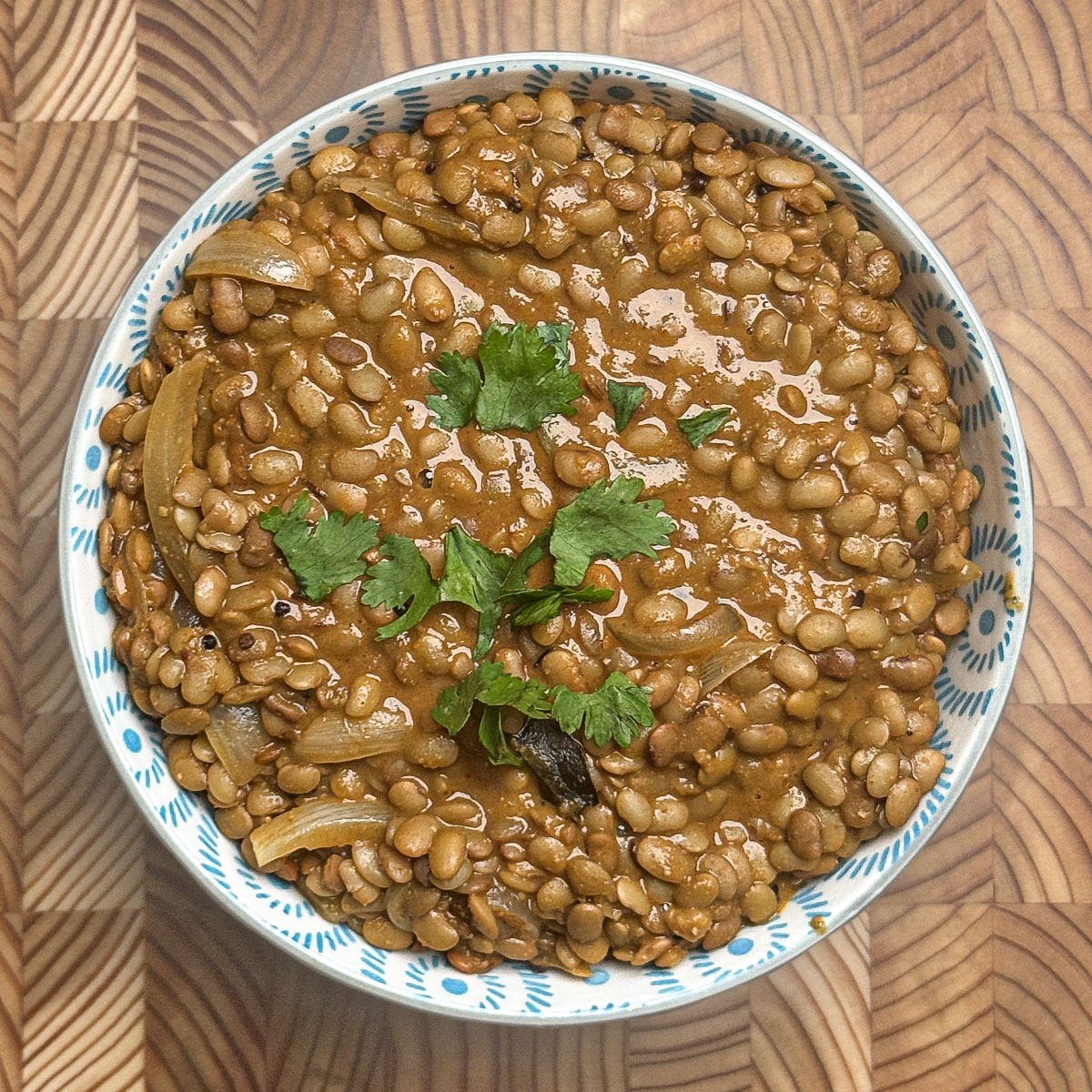
What started as Avva's clever way to use abundant ingredients became our family's favorite protein powerhouse. With 12 grams of plant-based protein per serving and a whopping 15 grams of fiber, this traditional curry does what no supplement can: it nourishes you with real food that actually tastes like home. Every spoonful delivers the kind of satisfaction that keeps you energized for hours, not minutes.
Jump to:
What Makes Horse Gram Curry So Nutritious
This humble South Indian curry packs a nutritional punch that would make any superfood jealous. While trendy ingredients come and go, horse gram has been quietly delivering exceptional nutrition for centuries.
- 12g protein per serving - more than 2 eggs, completely plant-based
- 15g fiber - that's 60% of your daily needs in one delicious bowl
- Rich in iron - 4mg helps fight fatigue and keeps energy levels steady
- Only 265 calories - lighter than most restaurant salads but infinitely more satisfying
- Zero cholesterol - heart-healthy comfort food that loves you back
When you combine these powerhouse legumes with antioxidant-rich spices and metabolism-boosting tamarind, you're not just making dinner. You're investing in your long-term health.
Key Ingredients and Their Benefits
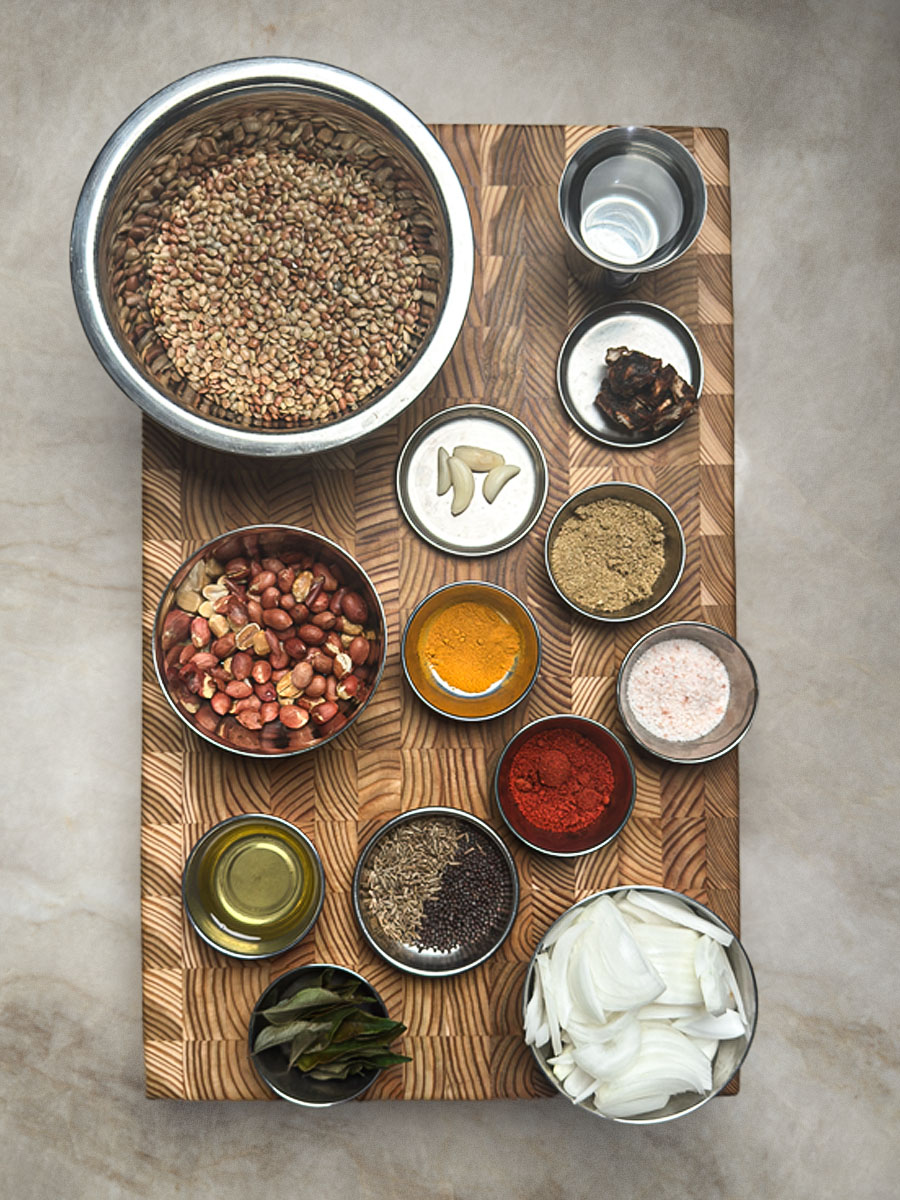
The Nutrition Stars
Horse Gram: This drought-resistant legume is the unsung hero of Indian kitchens
- Highest protein content among pulses - 22g per 100g dry weight
- Helps regulate blood sugar with its low glycemic index
- Look for uniform brown color without any musty smell
- Can't find it? Try whole masoor dal, though protein will be slightly lower
Peanuts: More than just a creamy base, they're nutrition in a shell
- Heart-healthy monounsaturated fats that keep you satisfied
- 7g protein per ounce boosts the curry's staying power
- Choose raw peanuts for roasting to control sodium
- Cashews work too but will make it richer (and pricier)
Tamarind: Nature's flavor enhancer with hidden benefits
- Loaded with antioxidants that fight inflammation
- Natural source of B vitamins for energy metabolism
- Select plump, brown pods or blocks without white crystals
- Lemon juice can substitute but you'll miss the complex sweetness
Smart Shopping Tips
- Buy horse gram from Indian grocers for best quality and price
- Store dried legumes in airtight containers up to a year
- Frozen curry leaves stay fresh for months, so stock up when you find them
- Tamarind paste saves time but check for added sugars
Instructions
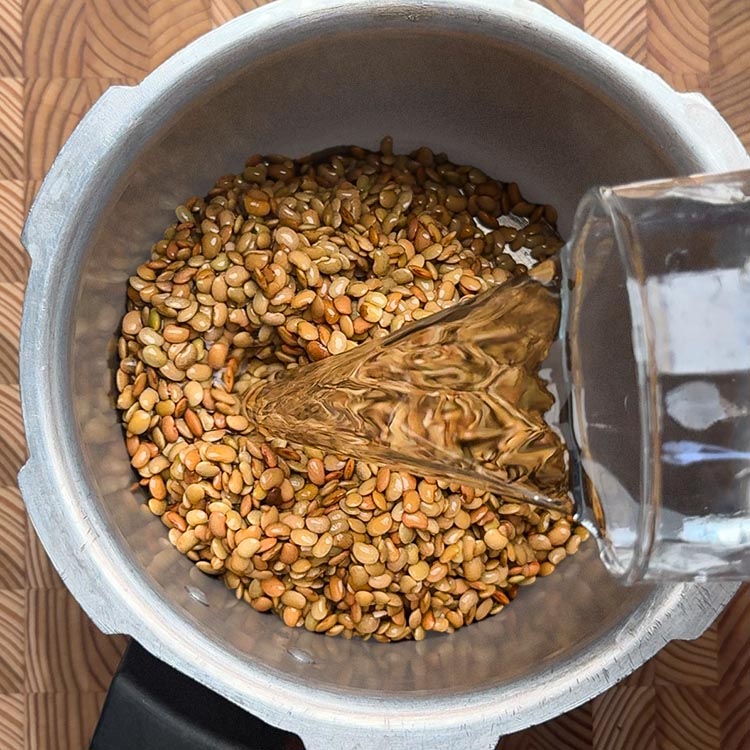
- Pressure cook soaked horse gram
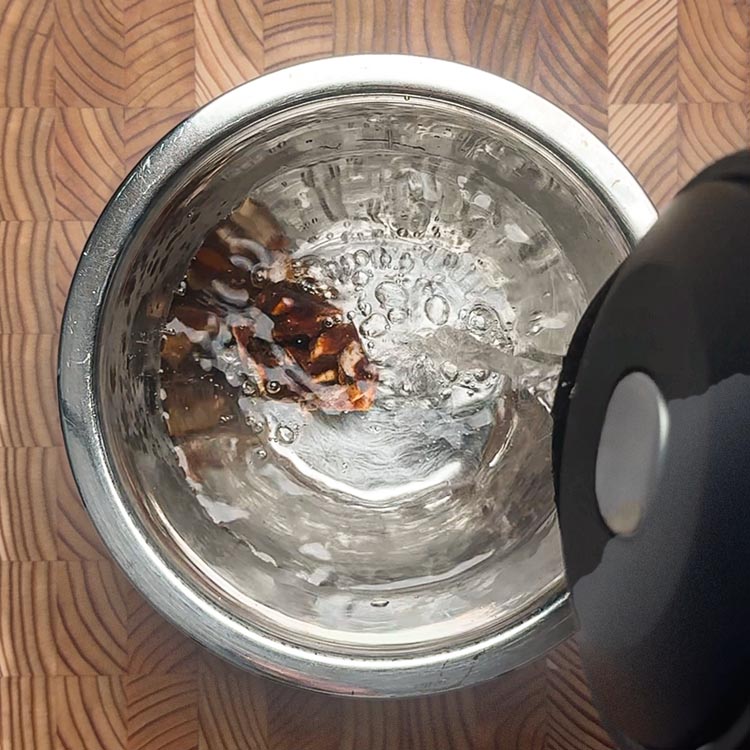
- Soak tamarind
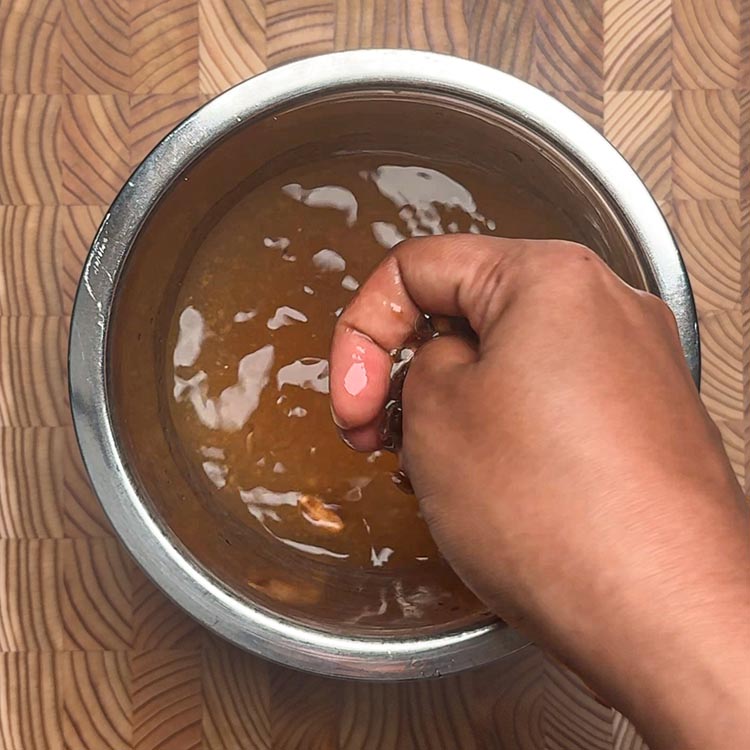
- Squeeze to extract
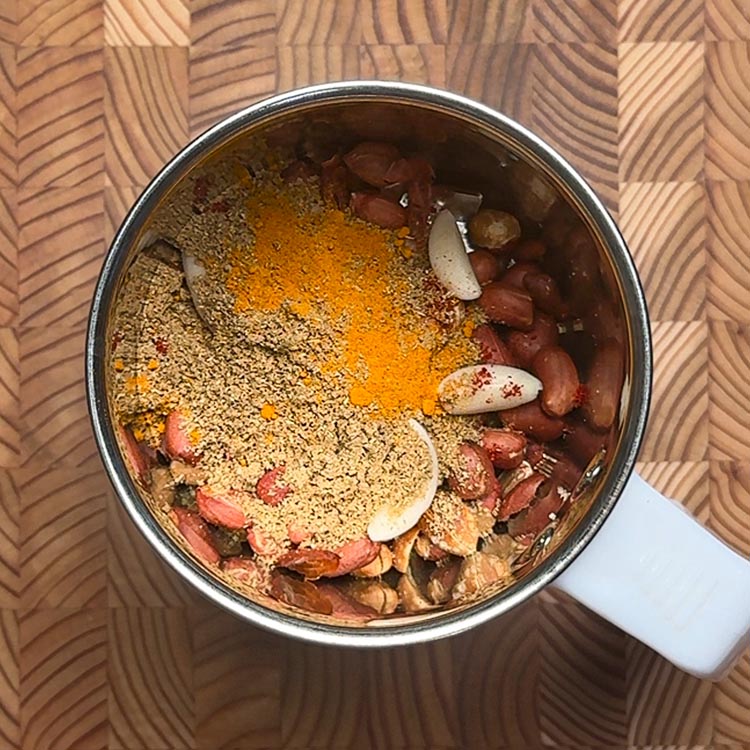
- Add all ingredients for sauce in a grinder. Add tamarind water to blend.
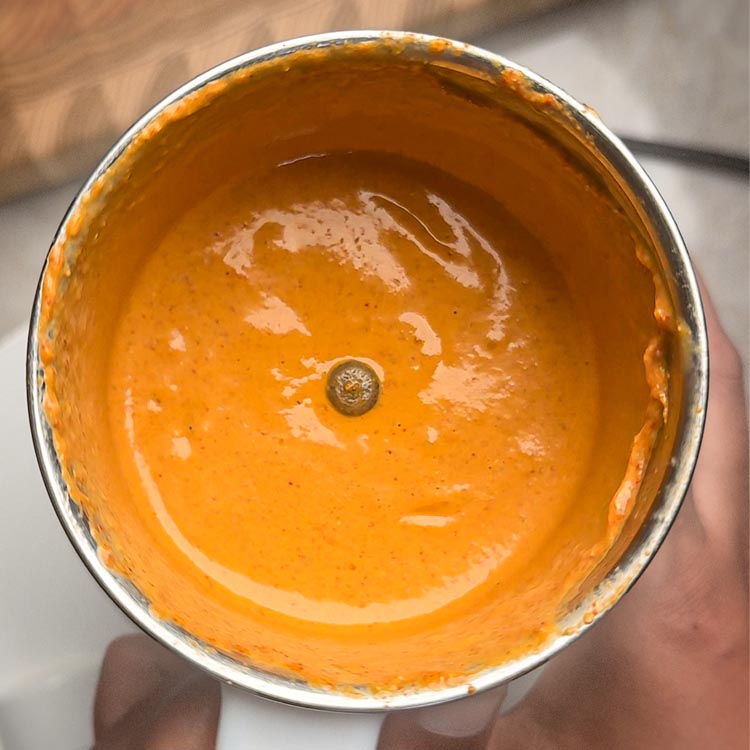
- Grind it into a paste consistency
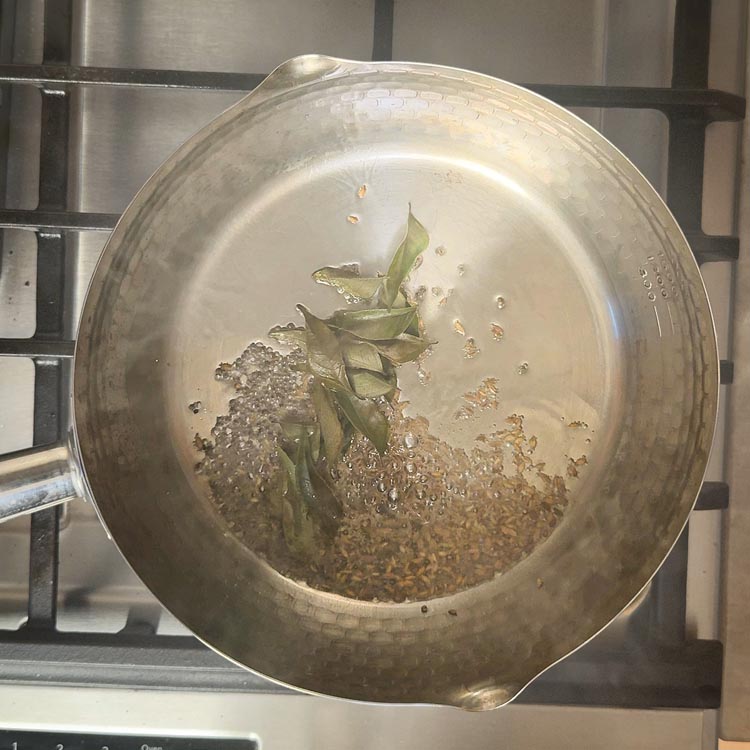
- Start the tempering with seeds and curry leaves
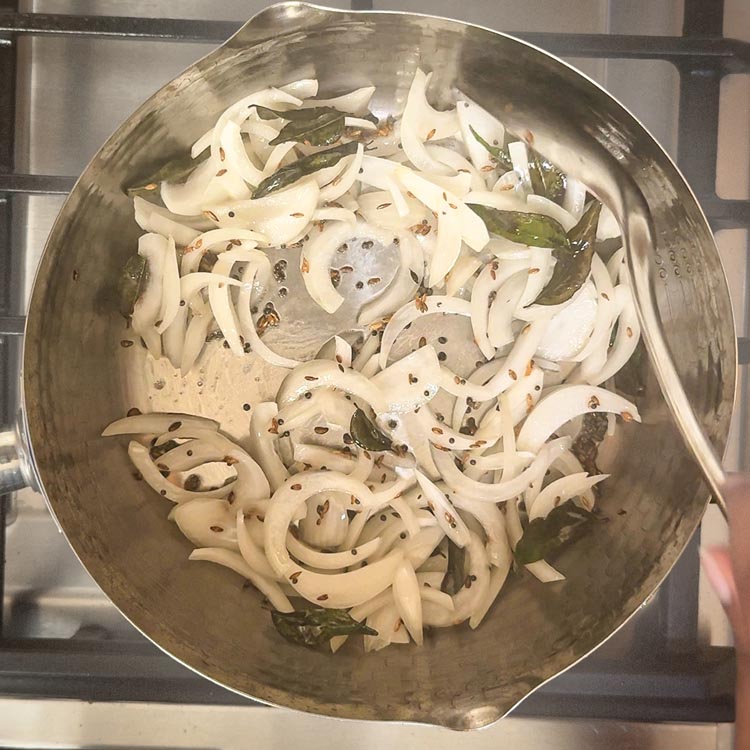
- Add onions and sauté
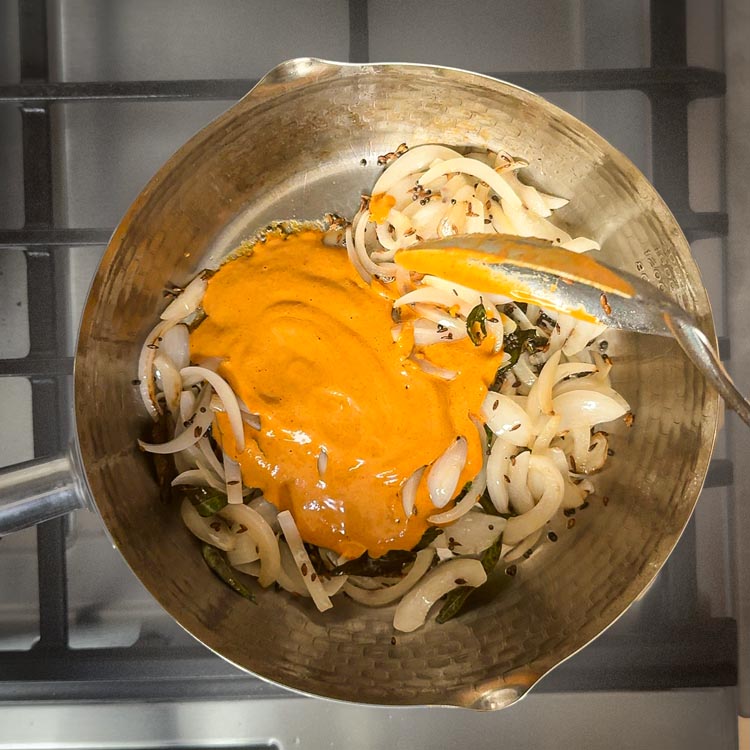
- Add peanut sauce and sauté
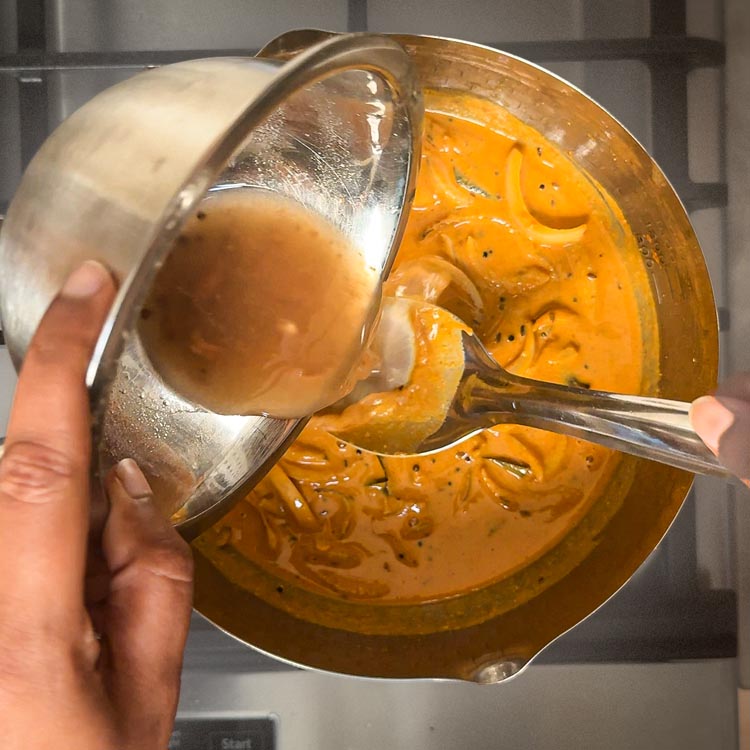
- Add the rest of the tamarind water and bring it to a boil
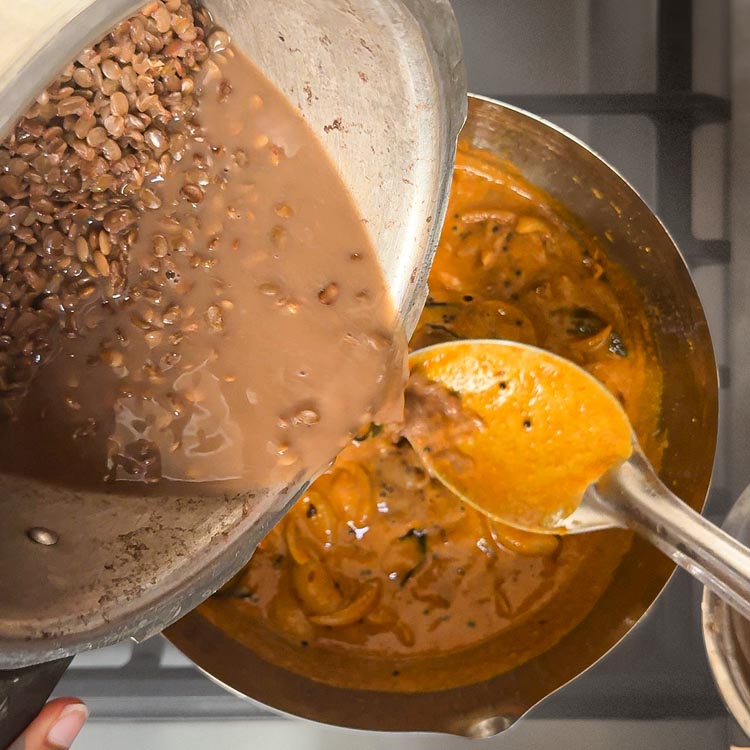
- Add cooked horse gram to the sauce
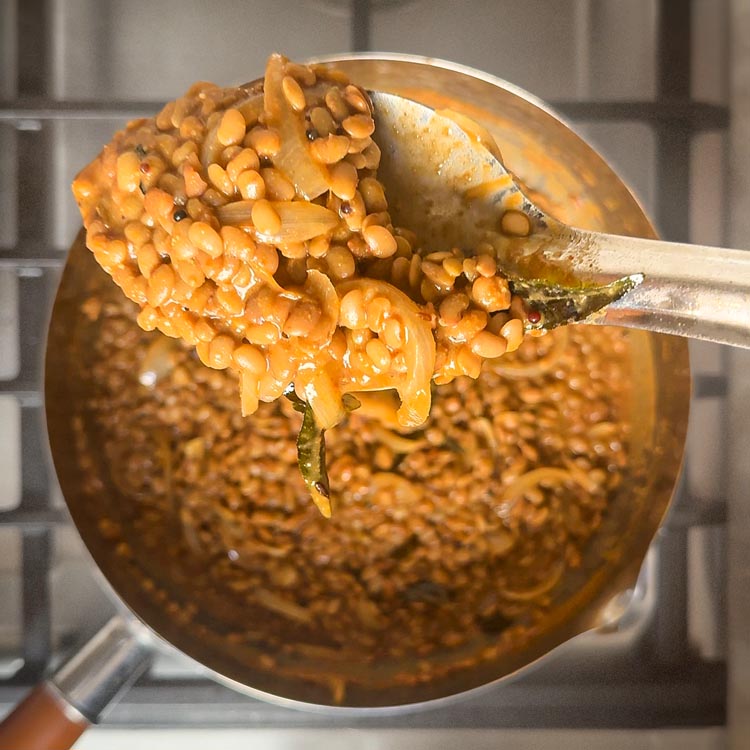
- Bring it to boil untill you see the oils separating

- Garnish with coriander and serve
How to Make Horse Gram Curry Perfectly
Pro Tips for Best Results
Creating restaurant-quality curry at home isn't about fancy techniques. It's about understanding the why behind each step.
- Soak overnight, not just 4 hours: Longer soaking reduces cooking time and makes nutrients more bioavailable while reducing anti-nutrients
- Medium heat for tempering: Too hot burns the mustard seeds and destroys their beneficial compounds; you want a gentle pop, not fireworks
- Sauce should coat the spoon: The perfect consistency clings without being gloopy; this concentrates flavors and ensures every bite is satisfying
- Don't skip the cooking liquid: That starchy water contains dissolved minerals and adds body without extra calories
- Rest before serving: 10 minutes off heat lets flavors marry and prevents tongue-burning temperatures that can mask the complex taste
Make-Ahead Strategy
This curry actually improves with time, making it perfect for meal prep warriors. The flavors deepen overnight as spices continue to infuse the sauce.
- Store cooled curry in glass containers for best flavor retention
- Keeps 4 days refrigerated or 3 months frozen
- Add fresh curry leaves when reheating to brighten the dish
Serving Ideas and Variations
How to Serve
While steaming white rice is traditional, this versatile curry shines with creative pairings that boost nutrition even further.
- With quinoa: Adds 4g more protein and creates a complete amino acid profile
- Over cauliflower rice: Cuts calories by 100 while adding vitamin C
- With whole wheat roti: The fiber combo keeps blood sugar steady for hours
For maximum visual appeal, garnish with fresh coriander and a sprinkle of roasted peanuts. The crunch contrast makes every bite interesting.
Delicious Variations
Sometimes you need to adjust recipes for dietary needs or simply to keep things interesting.
- Winter warming: Toss in diced sweet potato with the horse gram for beta-carotene and natural sweetness
- Protein boost: Add a cup of spinach in the last 5 minutes for extra iron and folate
- Lower calorie: Use 2 tablespoons powdered peanut butter instead of whole peanuts to save 80 calories
Top Tip
"The Texture Game-Changer": Mash just 2-3 tablespoons of the cooked horse gram against the side of the pan before adding the rest. This releases starches that naturally thicken the curry without any flour or cornstarch, creating that restaurant-style silky consistency.
Nutrition
One serving of Horse Gram (Ulavalu) Curry, which is 1 bowl (175 g each), contains 265 calories with 12g of protein, 15g of fiber and 33g of carbs.
Your Questions Answered
Absolutely! Pressure cook soaked horse gram on high for 12 minutes with natural release. The controlled environment actually preserves more heat-sensitive B vitamins than stovetop cooking.
No worries! This happens when the cooking liquid evaporates too quickly. Simply add hot water (not cold) a quarter cup at a time until you reach your desired consistency. The nutrition stays the same, just more diluted.
This usually happens when the tempering burns or the tamarind is too concentrated. Make sure your oil isn't smoking hot when adding mustard seeds, and always dilute tamarind well. If it's already bitter, add a pinch of jaggery or sugar to balance it out.
Fresh curry leaves are irreplaceable for authentic flavor, but in a pinch, you can add a bay leaf during tempering and remove it before serving. Some stores sell dried curry leaves, but use double the amount as they're less potent. Skip them entirely rather than substituting with other options.
This horse gram curry proves that the most nutritious meals often come from the simplest traditions. With more protein than expensive supplements, more fiber than trendy powders, and more flavor than anything from a jar, it's the kind of recipe that makes healthy eating feel like coming home. The magic happens when humble ingredients meet time-tested techniques. Just like Avva's sun-dried harvests transformed into something extraordinary.
Have you tried cooking with horse gram before? What family recipes do you turn to when you need both nutrition and comfort? Share your kitchen adventures below. I'd love to hear how you make this curry your own!
Related
Looking for other recipes like this? Try these:
Pairing
These are my favorite dishes to serve with Horse Gram (Ulavalu) Curry:
Horse Gram (Ulavalu) Curry
Equipment
- Pressure Cooker for cooking horse gram
- Blender or mixer grinder for peanut paste
- Heavy-bottomed pan
- Small bowl for soaking tamarind
Ingredients
For the Base:
- 1 cup (225 g) horse gram - soaked overnight (225 g)
- 1 tablespoon (10 g) tamarind - small lemon-sized ball
- 2 ½ cup warm water - for tamarind and cooking horse gram
For the Sauce:
- ¼ cup (45 g) peanuts - roasted
- 4 cloves garlic
- ½ teaspoon turmeric powder
- 1 ¼ teaspoon (1 g) red chili powder - adjust to taste
- 1 tablespoon (8 g) coriander powder
For Tempering:
- 2 tablespoon oil
- 1 teaspoon mustard seeds
- 1 teaspoon cumin seeds
- 1 medium (135 g) onion - finely chopped
- 10-12 curry leaves - fresh
- 1 ½ teaspoon salt
- 1 tablespoon coriander leaves - optional
Instructions
Prepare the Horse Gram:
- Rinse 1 cup horse gram thoroughly and soak in water overnight or for at least 8 hours.
- Drain the soaked horse gram and pressure cook with 2 cups of water for 2-3 whistles or until soft. Reserve the cooking liquid. Set aside.
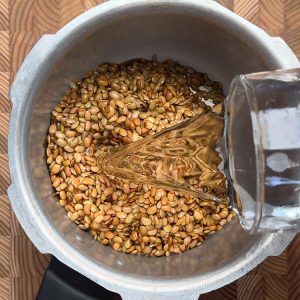
Prepare the Tamarind:
- Soak 1 tablespoon tamarind in 2 ½ cup warm water for 10 minutes. Squeeze well to extract the pulp and strain. Divide the tamarind water into two equal portions - one for grinding and one for the curry.
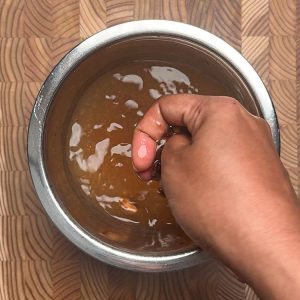
Make the Peanut Paste:
- Dry roast ¼ cup peanuts in a pan until golden and fragrant if you don't have roasted peanuts. Let them cool.
- In a blender, combine the roasted peanuts, 4 cloves garlic, ½ teaspoon turmeric powder, 1 ¼ teaspoon red chili powder, and 1 tablespoon coriander powder. Add half of the tamarind water and grind to a smooth paste.
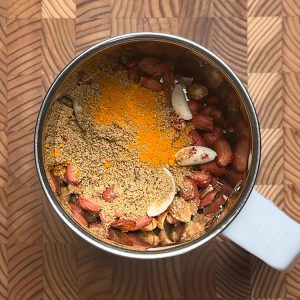
Prepare the Curry:
- Heat 2 tablespoon oil in a heavy-bottomed pan over medium heat.
- Add 1 teaspoon mustard seeds and 1 teaspoon cumin seeds. When they start to splutter, add 10-12 curry leaves.
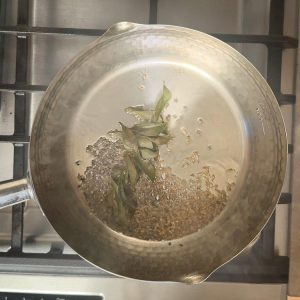
- Add 1 medium onion and sauté until golden brown.
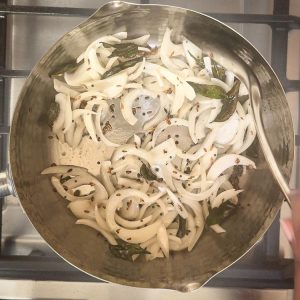
- Add the prepared peanut paste and sauté for 2-3 minutes until the raw smell disappears and oil starts to separate.
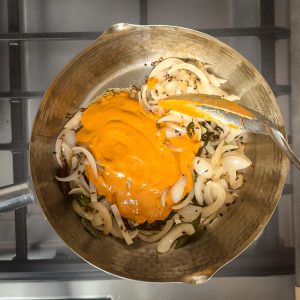
- Add the remaining half of the tamarind water and 1 ½ teaspoon salt. Mix well and bring the mixture to a boil.
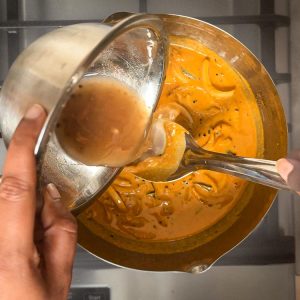
- Once boiling, add the cooked horse gram along with its cooking liquid. Mix well and let it simmer.
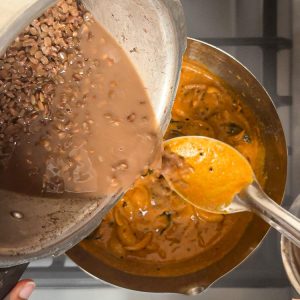
- Reduce heat and simmer for 10-15 minutes until the curry reaches desired consistency. Adjust salt and spices as needed.
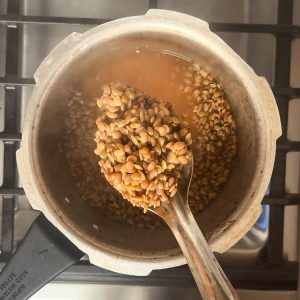
- Garnish with fresh 1 tablespoon coriander leaves if desired. Serve hot with steamed rice or roti.
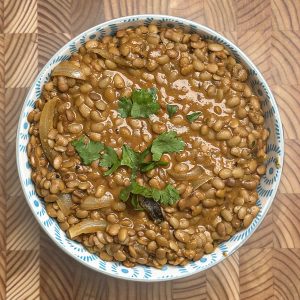

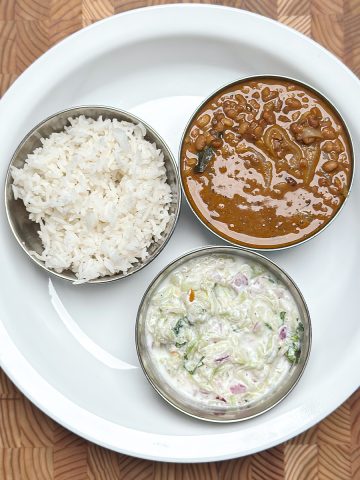
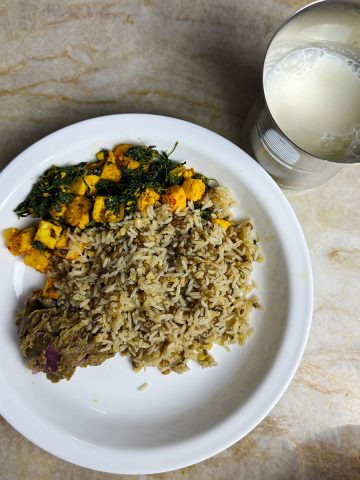
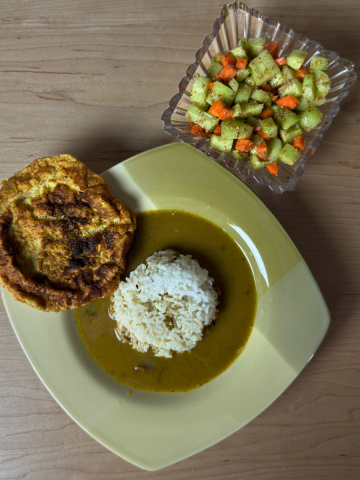
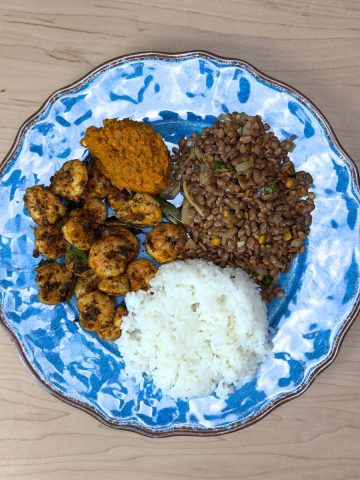
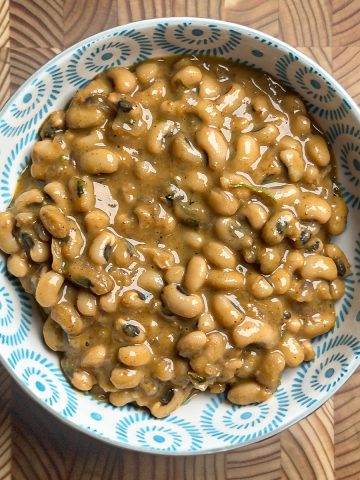
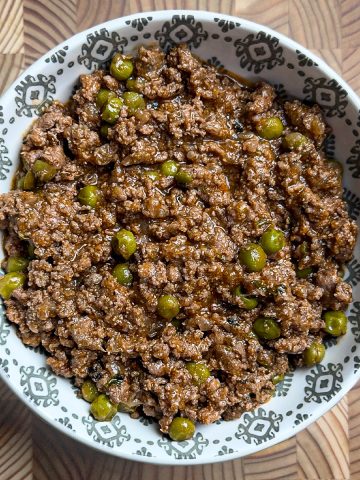
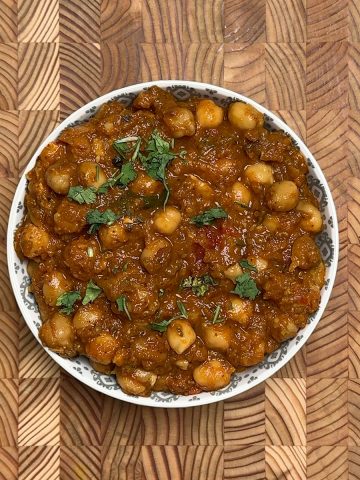
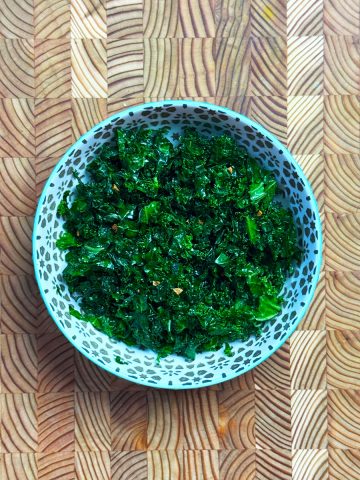
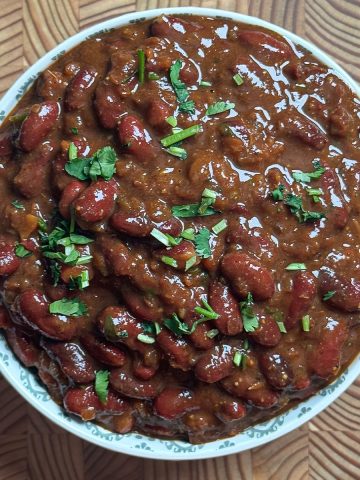
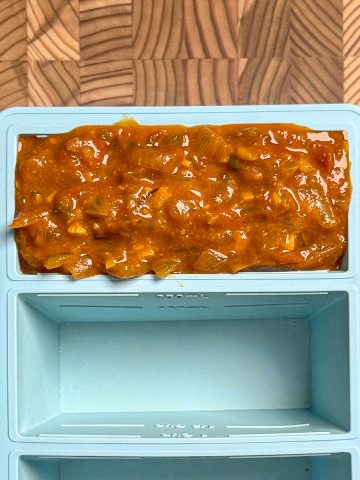
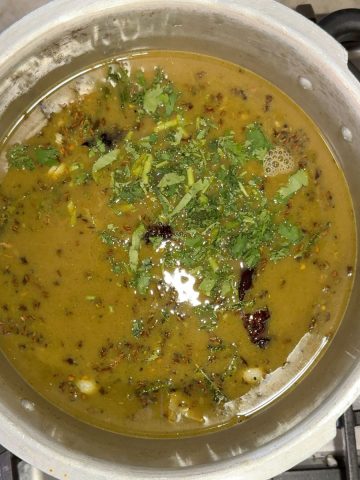
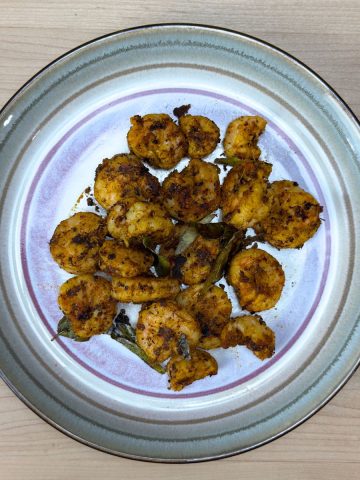
Leave a Reply